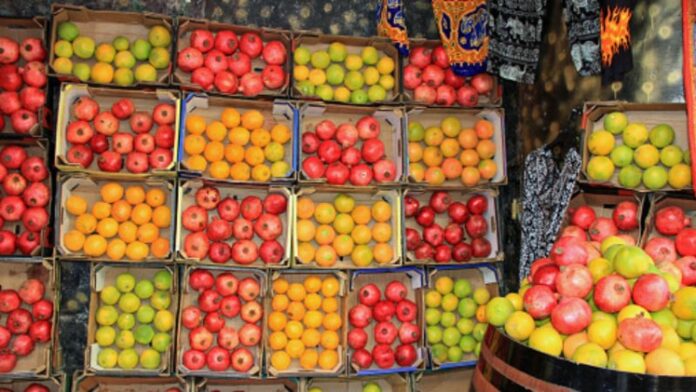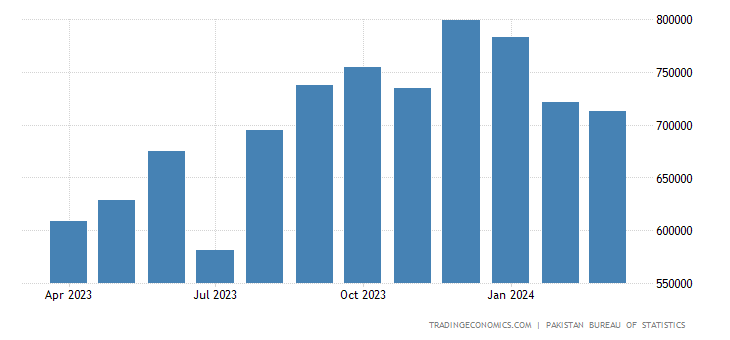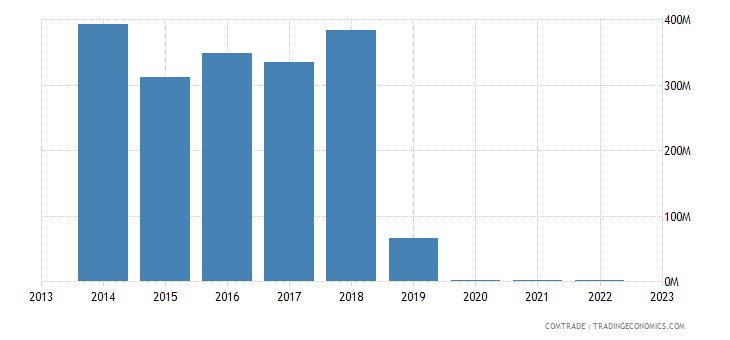ghazi52
PDF THINK TANK: ANALYST

- Joined
- Mar 21, 2007
- Messages
- 101,790
- Reaction score
- 106
- Country
- Location
Pakistan earned record $730m revenue, 12.5pc increases in export of fruits, vegetables in FY2019-20
By
Ghulam Abbas
-
August 11, 2020

ISLAMABAD: Pakistan has registered record enhancement in export of fruits and vegetables of 12.5 percent amounting to $730 million in FY2019-20, despite the coronavirus global pandemic.
This is also the highest revenue in terms of foreign exchange generation. During the last year the export of fruits was enhanced by 3.8 percent while the vegetables reflected an increase in export by 28 percent. Export of fruits fetched $431.27 million while export of the vegetables generated $30 million.
As per the horticulture exporters, at the time when the global trade was facing stiff challenges timely delivery of Pakistani fruits and vegetables to importing countries was almost impossible to ensure due to the pandemic and resulting lock downs, the exporters translated these challenges into opportunity by enhancing exports of this sector and adopting realistic strategies.
Sharing data of the exports, All Pakistan Fruit and Vegetable Exporters, Importers and Merchants Association (PFVA) has claimed that apart from the efforts on the part of growers and traders, the support extended by the federal government, and timely decisions in removal of trade barriers were also imperative in this considerable jump in exports.
Pakistan sensing difficulties in export by air adopted an alternative strategy to export by land routes and sea. Special attention was given to the International markets of Iran and Afghanistan and the Federal Govt. promptly resolved the issues related to this sector in export to Iran and Afghanistan leading to enhancement of exports, Waheed Ahmed of PFVA claimed.
He said that due to the coronavirus global pandemic, the entire world was in desperate need of fruits and vegetables containing vitamins to minimize ill-effects of this pandemic, and Pakistan grabbed this unique opportunity and enhanced export of Kinnow, Potato and Onion despite serious issues of transportation and logistics arising of the pandemic. During the peak of the pandemic, Pakistan exported delicious and highly nutrient mangoes to many countries of the World. Extensive efforts by the PFVA also resulted in reduction of Air freight charges by P.I.A to Gulf countries and International market of U.A.E facilitating exporters to compete in these highly demanding and competitive markets. Likewise, after ban on export of Onion by India, the PFVA convinced the Federal Govt. to lift the temporary restriction on export of Pakistani onion thus leading to increase in exports while price of onion and Potato remained stable in the local market as well and the growers got benefit of this stability.
Besides maintaining consistency in exports’ enhancement of fruits and vegetables, it’s also imperative to take necessary steps to further boost the export of this sector. To attain this objective, the PFVA has presented a comprehensive road map titled – “Horticulture Vision – 2030” to the Federal Govt. which has been developed with extensive consultation with all concerned stakeholders of the Horticulture sector of all the provinces and it spells out issues of the sector along with realistic solutions. This policy document highlights short, medium and long term solutions of the issues and barriers, the sector is confronted with. By effective implementation of the horticulture vision, Pakistan can easily enhance export of fruits and vegetables to $1 billion within a period of two years, $2 billion in five years and to $6 billion in a decade. Another encouraging aspect of this vision is provision of employment opportunities to 1.8 million people directly engaged in this sector within five years, and to create employment up to 3 million people in a period of ten years.
https://profit.pakistantoday.com.pk...-in-export-of-fruits-vegetables-in-fy2019-20/
By
Ghulam Abbas
-
August 11, 2020

ISLAMABAD: Pakistan has registered record enhancement in export of fruits and vegetables of 12.5 percent amounting to $730 million in FY2019-20, despite the coronavirus global pandemic.
This is also the highest revenue in terms of foreign exchange generation. During the last year the export of fruits was enhanced by 3.8 percent while the vegetables reflected an increase in export by 28 percent. Export of fruits fetched $431.27 million while export of the vegetables generated $30 million.
As per the horticulture exporters, at the time when the global trade was facing stiff challenges timely delivery of Pakistani fruits and vegetables to importing countries was almost impossible to ensure due to the pandemic and resulting lock downs, the exporters translated these challenges into opportunity by enhancing exports of this sector and adopting realistic strategies.
Sharing data of the exports, All Pakistan Fruit and Vegetable Exporters, Importers and Merchants Association (PFVA) has claimed that apart from the efforts on the part of growers and traders, the support extended by the federal government, and timely decisions in removal of trade barriers were also imperative in this considerable jump in exports.
Pakistan sensing difficulties in export by air adopted an alternative strategy to export by land routes and sea. Special attention was given to the International markets of Iran and Afghanistan and the Federal Govt. promptly resolved the issues related to this sector in export to Iran and Afghanistan leading to enhancement of exports, Waheed Ahmed of PFVA claimed.
He said that due to the coronavirus global pandemic, the entire world was in desperate need of fruits and vegetables containing vitamins to minimize ill-effects of this pandemic, and Pakistan grabbed this unique opportunity and enhanced export of Kinnow, Potato and Onion despite serious issues of transportation and logistics arising of the pandemic. During the peak of the pandemic, Pakistan exported delicious and highly nutrient mangoes to many countries of the World. Extensive efforts by the PFVA also resulted in reduction of Air freight charges by P.I.A to Gulf countries and International market of U.A.E facilitating exporters to compete in these highly demanding and competitive markets. Likewise, after ban on export of Onion by India, the PFVA convinced the Federal Govt. to lift the temporary restriction on export of Pakistani onion thus leading to increase in exports while price of onion and Potato remained stable in the local market as well and the growers got benefit of this stability.
Besides maintaining consistency in exports’ enhancement of fruits and vegetables, it’s also imperative to take necessary steps to further boost the export of this sector. To attain this objective, the PFVA has presented a comprehensive road map titled – “Horticulture Vision – 2030” to the Federal Govt. which has been developed with extensive consultation with all concerned stakeholders of the Horticulture sector of all the provinces and it spells out issues of the sector along with realistic solutions. This policy document highlights short, medium and long term solutions of the issues and barriers, the sector is confronted with. By effective implementation of the horticulture vision, Pakistan can easily enhance export of fruits and vegetables to $1 billion within a period of two years, $2 billion in five years and to $6 billion in a decade. Another encouraging aspect of this vision is provision of employment opportunities to 1.8 million people directly engaged in this sector within five years, and to create employment up to 3 million people in a period of ten years.
https://profit.pakistantoday.com.pk...-in-export-of-fruits-vegetables-in-fy2019-20/









 akistan has achieved trade surplus target of $210 million with Italy during fiscal year 2019-20 against the trade deficit of $164 million during the year 2018-19. The exports to Italy were recorded at $731 million and imports from the country stood at $521 million, Pakistan Ambassador to Italy, Jauhar Saleem said while addressing media persons from Rome, Italy through a web link. He informed that Pakistan’s major exports to Italy are textile, leather, rice, ethanol while Pakistan is market leader in rice and it holds 38 percent share in Italian rice market.
akistan has achieved trade surplus target of $210 million with Italy during fiscal year 2019-20 against the trade deficit of $164 million during the year 2018-19. The exports to Italy were recorded at $731 million and imports from the country stood at $521 million, Pakistan Ambassador to Italy, Jauhar Saleem said while addressing media persons from Rome, Italy through a web link. He informed that Pakistan’s major exports to Italy are textile, leather, rice, ethanol while Pakistan is market leader in rice and it holds 38 percent share in Italian rice market.
